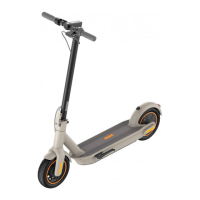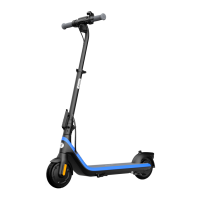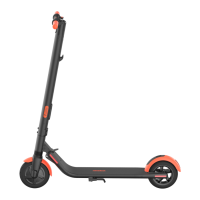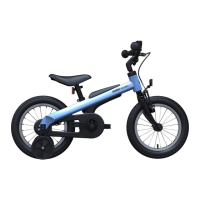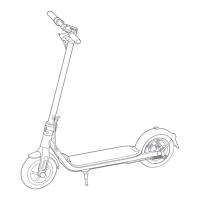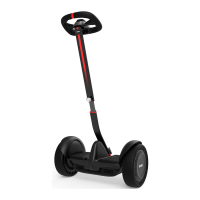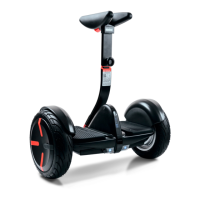11 Specifications
Model
Dimensions
Payload
Net Weight
Age
Height
Max. Speed
Max. Slope
Traversable Terrain
Product
Weight
Rider
Machine
Parameters
Motors
Charger
Tire
N3M432
10.3 × 22.8 × (25.4–37.6) in / 262 × 578 × (645–955) mm
[1]
88.2–220 lbs / 40–100 kg
Approx. 46.3 lbs (21 kg)
16–60 years old
51.2–78.7 in / 130–200 cm
Approx. 12.4 mph (20 km/h)
Approx. 23.6 mph (38 km/h)
Approx. 15 °
Pavement, packed dirt, slopes < 15 °, obstacles < 0.4 in (1 cm), gaps < 1.2
in (3 cm)
14–104°F (-10–40°C)
-4–122°F (-20–50°C)
IP54
4 hours
62 V DC
432 Wh
32–104°F (0–40°C)
500 W × 2
2400 W × 2
100-240 V~50-60 Hz
63.0 V
62.0 V 2.0 A
124.0 W
Tire width: 2.7 in (68 mm); 10 × 2.75 in, hollow solid tire
Operating Temperature
Storage Temperature
IP Rating
Charge Time
Nominal Voltage
NCH1504-L
Battery model
Nominal Capacity
Charging Temperature
Battery Management System
Nominal Power
Max. Power
Input Voltage
NBW63D002D0D
Model
Max. Output Voltage
Rated Output
Output Power
Tire
Ninebot S-Max
Power Assist Mode
Pull up the guide bar to enter Power Assist Mode (powered on, with no rider).
Steer the S-Max across smooth surfaces using the guide bar.
10 Lifting and Power-assist Mode
Lifting
Correct:
Lift via the steering bar
as shown above.
Wrong 2:
Lift by the fender.
Wrong operation may injure your fingers/hands.
Do not guide it upstairs, across potholes,
overlarge cracked/uneven surfaces, or
over other obstacles.
Max. Charging Voltage 63 V DC
Wrong 1:
Lift by the mainframe.
Typical Range
[2]
[1] The two values in brackets are the lowest distance from the ground to the highest part of the mainframe.
[2] Typical Range: tested while riding under full power, 165.3 lbs (75 kg) load, 77°F (25°C), 60% of max. speed on average on
pavement. * Some of the factors that affect range include: speed, number of starts and stops, ambient temperature, etc.
Over-voltage, under-voltage, short circuit, and over-heating protection. Auto-sleep and
auto-wake.
36 37
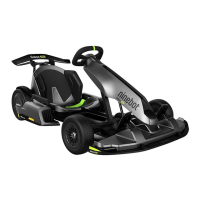
